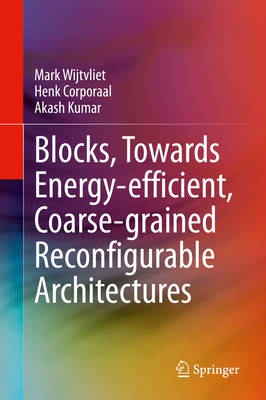
- Retrait gratuit dans votre magasin Club
- 7.000.000 titres dans notre catalogue
- Payer en toute sécurité
- Toujours un magasin près de chez vous
- Retrait gratuit dans votre magasin Club
- 7.000.0000 titres dans notre catalogue
- Payer en toute sécurité
- Toujours un magasin près de chez vous
Blocks, Towards Energy-Efficient, Coarse-Grained Reconfigurable Architectures
Mark Wijtvliet, Henk Corporaal, Akash KumarDescription
This book describes a new, coarse-grained reconfigurable architecture (CGRA), called Blocks, and puts it in the context of computer architectures, and in particular of other CGRAs. The book starts with an extensive evaluation of historic and existing CGRAs and their strengths and weaknesses. This also leads to a better understanding and new definition of what distinguishes CGRAs from other architectural approaches.
The authors introduce Blocks as unique due to its separate programmable control and data paths, allowing light-weight instruction decode units to be arbitrarily connected to one or more functional units (FUs) over a statically configured interconnect. The discussion includes an explanation of how to model architectures, resulting in an area and energy model for Blocks. The accuracy of this model is evaluated against fully implemented architectures, showing that although it is three orders of magnitude faster than synthesis the error margin is very acceptable. Thebook concludes with a case study on a real System-on-Chip, including a RISC architecture, the Blocks CGRA and peripherals.
Spécifications
Parties prenantes
- Auteur(s) :
- Editeur:
Contenu
- Nombre de pages :
- 220
- Langue:
- Anglais
Caractéristiques
- EAN:
- 9783030797737
- Date de parution :
- 03-08-21
- Format:
- Livre relié
- Format numérique:
- Genaaid
- Dimensions :
- 203 mm x 239 mm
- Poids :
- 544 g

Les avis
Nous publions uniquement les avis qui respectent les conditions requises. Consultez nos conditions pour les avis.






